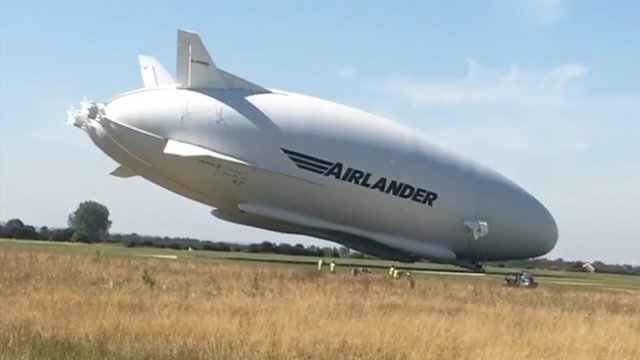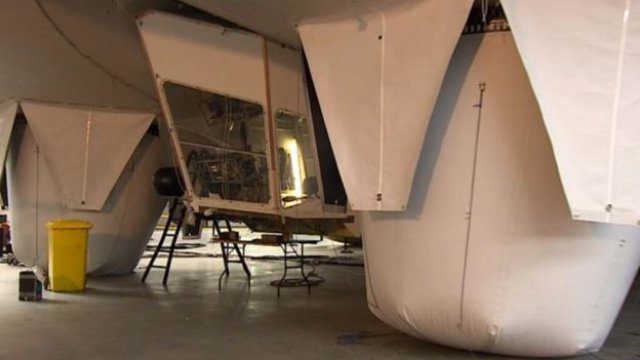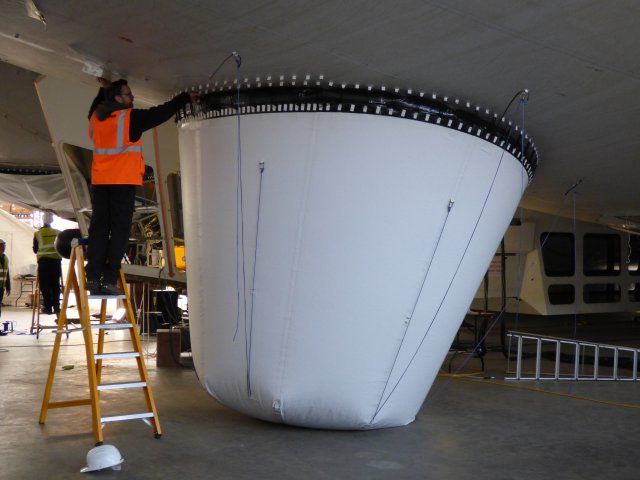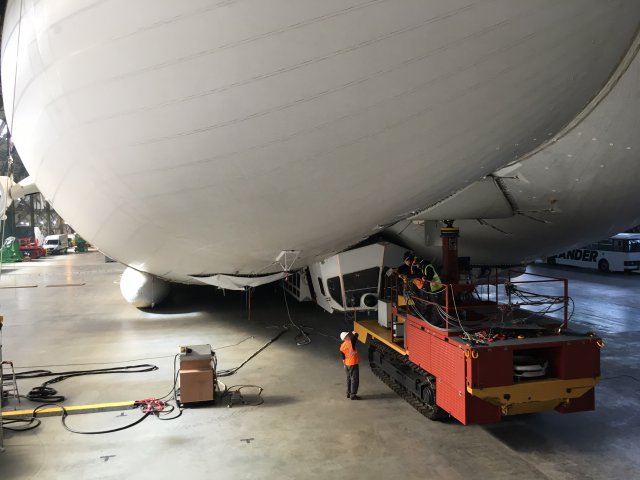has announced two significant enhancements to the aircraft ahead of its imminent Hangar Exit and resumption of its Flight Test Programme, namely an all-new Auxiliary Landing System and a Mobile Mooring Mast.
An Auxiliary Landing System (ALS) has been added which allows the aircraft to land safely at a greater range of landing angles. This is a pilot-deployable two airbag landing system, which the pilot can deploy as an extra cushion to land on. The airbags are over 3 metres in length and contain 15 m³ gas (less than 0.1% of the entire hull volume).
There is an airbag on each side of the Flight Deck, which offers enhanced protection to the cabin and Flight Deck. It will be deployed on most landings in the flight test programme. It uses the existing ballonet fans to inflate, and takes under 20 seconds to be ready for use.
“We had to look at how you stop 35 tonnes of airship coming down and squashing that composite flightdeck area,” programmes director Nick Allman said. “It will give us no drag [and] no change in how the aircraft flies normally.”
As the craft comes in to land air from inside the craft’s body will inflate the airbag feet in “about 15 seconds”.
“What we’ve done is put in 63 changes – some to the aircraft but most to process, procedure, and training – so that sort of event is extremely unlikely to ever happen again,” Chris Daniels from HAV added.
Another major accomplishment is the commissioning of the Mobile Mooring Mast (MMM). The MMM is an integrated tracked vehicle and mooring mast, which makes it much easier to control and ”push back” the Airlander when manoeuvering it around the airfield. It has a single pivot interface with the Airlander, so makes a much simpler mechanism than we previously had.
“Both of these enhancements are great engineering innovations, and show the creativity and ingenuity of the team working on Airlander to great effect. We look forward to using them for real very soon.”
– Steve McGlennan, CEO Hybrid Air Vehicles Ltd.





Only when we have a fresh “next flight” date for Airlander will we be able to estimate the date of the next crash. Mother Nature has been clear and consistent about not favoring airships…and she has now even extentended that warning to Bounce Houses.
looks like it would reduce visibility significantly during landings…
Funny how they expected it to operate in remote location to haul lumber, when it can’t even land in an airport. There is a reason why every airships picture you seen in the last 200 years is either in the air or at a huge airport or some big clearings…. Not to mention the huge ground crew needed. Every Goodyear blimp have like 4 or 5 Semi and the crews to match it that follows it to every stadium that it wants to fly over…